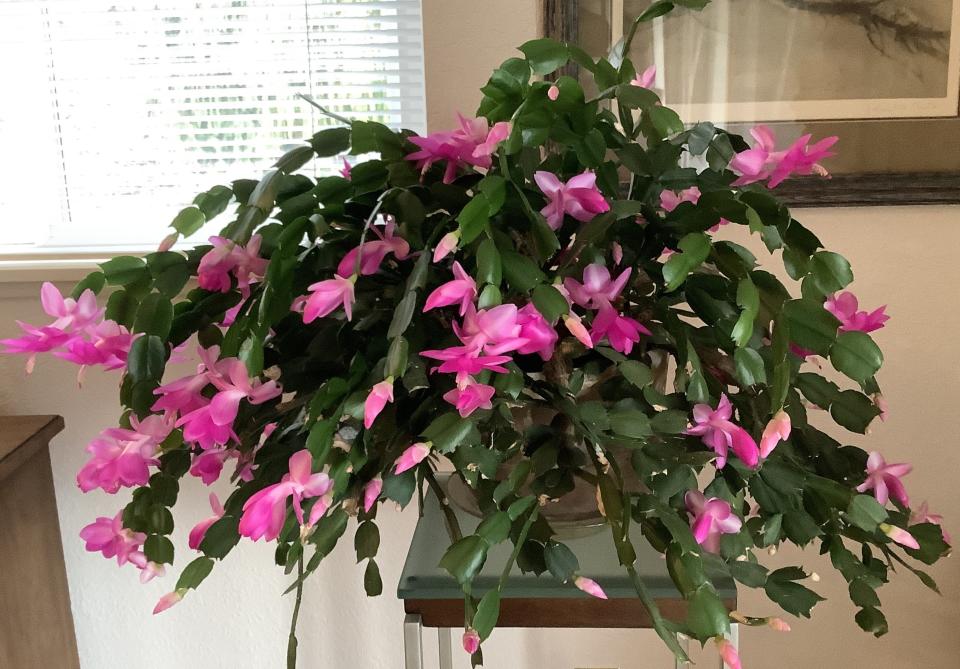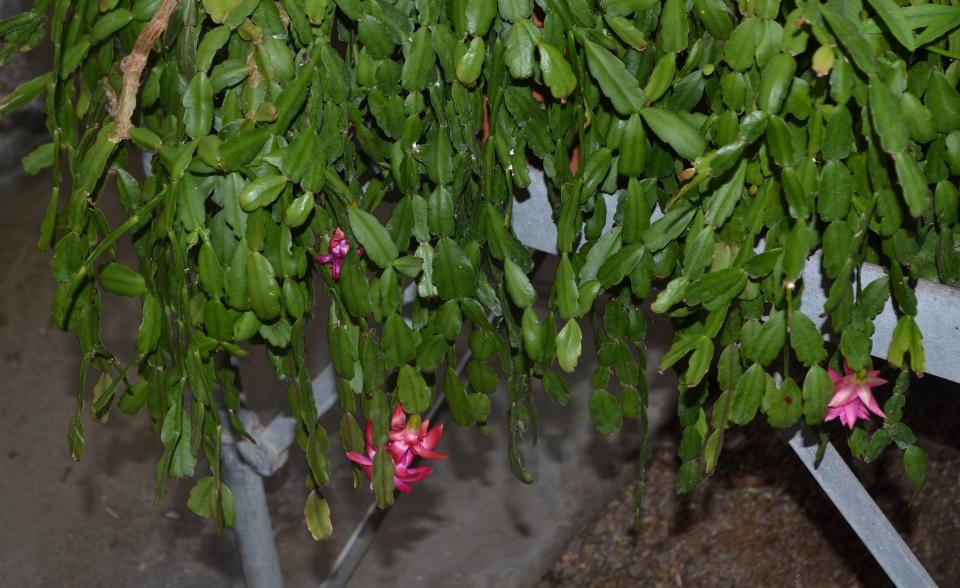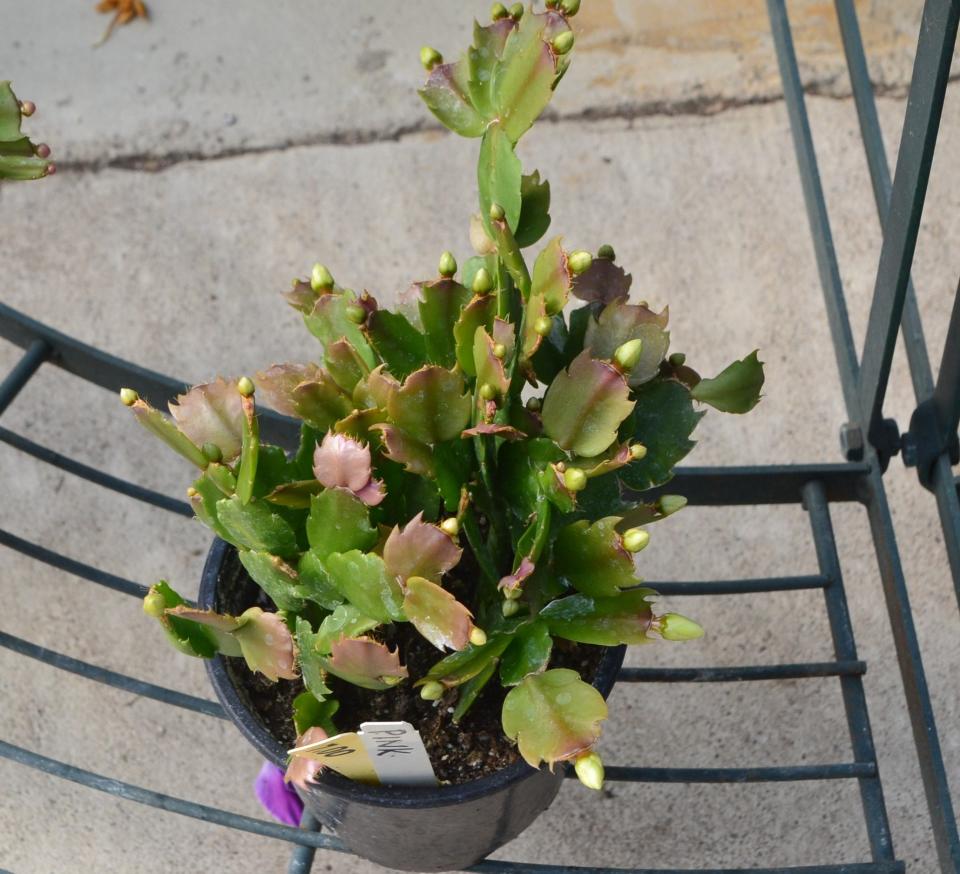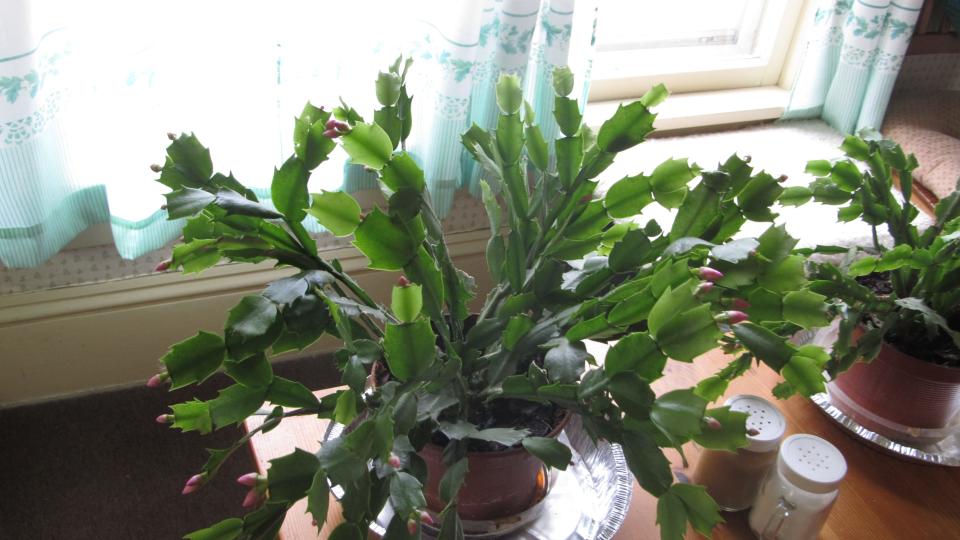A Stroll Through the Garden: Christmas cactus care and reblooming
Over the past few years several people, including one person at a recent prayer meeting, have asked me about the possibility of getting Christmas cactus or Schlumbergia truncata to re-bloom, which is an issue in a number of different ways.
These plants from the mountain forests and jungles in Brazil need special care because the blossom can be very delicate and plants will shed their flowers quickly. In the wild, our jungle cactus plants will be pollinated by hummingbirds.
My grandmother kept a few of these Christmas cacti for as long as I can remember. She was amazing with all plants, and she got these two plants to bloom every year. I remember grandma breaking one of these leaf-stems and giving them to her friends, which were easy to start. She always said don’t thank me for the plant when she would give someone a piece.
Seriously, I never really knew why, but she did. One of the things I've learned as a gardener and a landscaper is that if you want a plant of any sort to do well, imitate the conditions in which you find the plant in nature and take care of the plant. Most Christmas cactus and Thanksgiving cactus are jungle plants.

Grandma also watered and fed her Christmas cactus properly. I have no doubt that these massive plants were 20 years old. Mom kept some of these same Christmas cactus for many years. We need to feed the Christmas cactus from March to October. Once the flowers are shed, it needs to begin a period of rest. Don’t feed your Christmas cactus from after the flowers fall until March.
Over the years, I’ve been trained to do serious work like pruning or thinning or transplanting just after the blooms come off for the least amount of shock to the plant. For instance, the best time to prune and thin out a rhododendron is after it finishes blooming in the spring.
The delicate cactus needs to shed its blooms naturally and then we can look at repotting. Test the soil in the pot at least once a year to make sure you are not poisoning the plant by over fertilizing. This might be best done after repotting your Christmas cactus.

Care tips during the winter and beyond
So here is how you can get them to bloom. After the blooms have fallen, a Christmas cactus needs to have a period of rest and should be kept in medium light at about 55 degrees, watering only intermittently, from mid-January to March. In April and May you want to increase watering and let the surface of the soil just get a little dry. From the beginning of June to the middle of September you are going to want to place the plant outside in a shady area and protect them from slugs.
Here is one of the tricks from the middle of September to the middle of November. Just before the flowers come, you are going to want to reduce watering and lean towards the dry side. The flower buds need to keep cool to help them to form. Specifically, you need long nights and cool temperatures.
A nighttime temperature of 55 degrees to start flower bud development or a long night such as a 12-hour night will also cause the flower buds to set. Once they have formed, you need to increase the water and temperature. To get these cacti to bloom, you should also do some light and temperature manipulation.

You will need 12 hours of light and 12 hours of complete darkness for 6 to 8 weeks to get the buds to set. The temperature is also critical in setting buds. For you to imitate the area where Christmas cactus blooms naturally, you need to maintain a 55-degree temperature for the same length of time, not allowing the temperature to rise.
To get the buds to bloom, you need another 12 weeks of this same light and dark treatment with the temperatures as stated. Once the cactus has bloomed, move the plant into a bright window with no direct sunlight or drafts for the blooms to be maintained for an extended period of time.
There are many different ideas that one can see as to how to solve challenges that we face when we grow Christmas cactus.

I hope you enjoy the plants you have in your home this year. If you have any problems, email me at ericlarson546@yahoo.com. You will be able to find my column in a blog with a link to my website, ohiohealthyfoodcooperative.org. Thank you for participating in our column.
Eric Larson of Jeromesville is a veteran landscaper and gardening enthusiast and a founding board member of the Ohio Chapter of Association of Professional Landscape Designers.

This article originally appeared on Mansfield News Journal: How to get your Christmas cactus to rebloom

